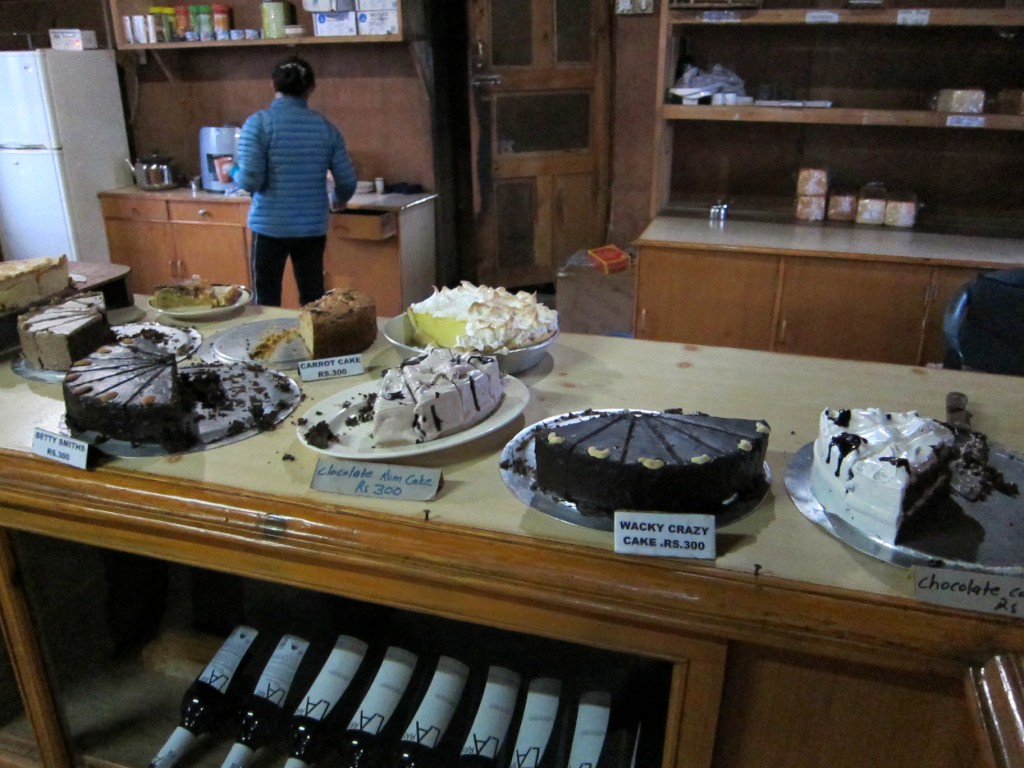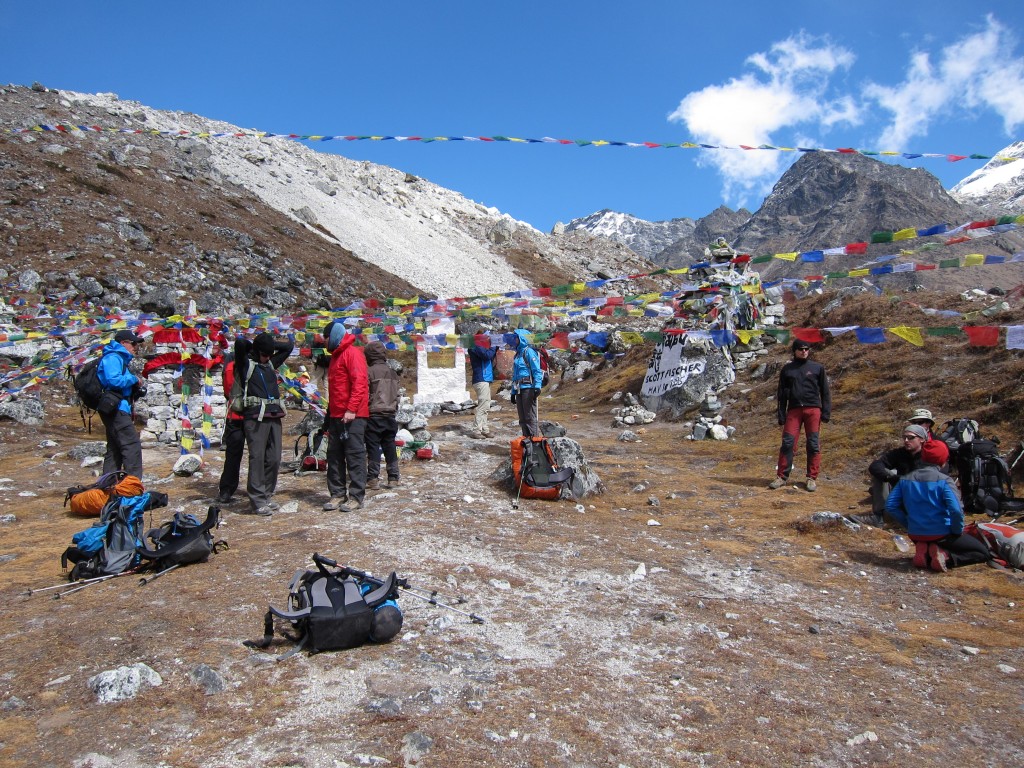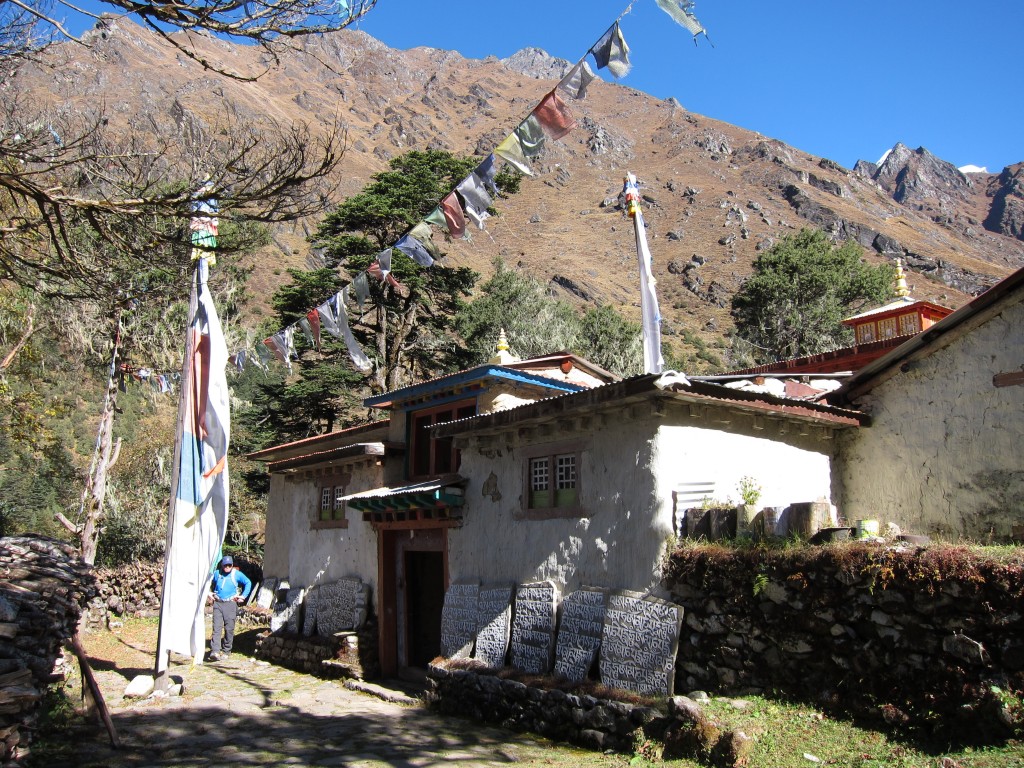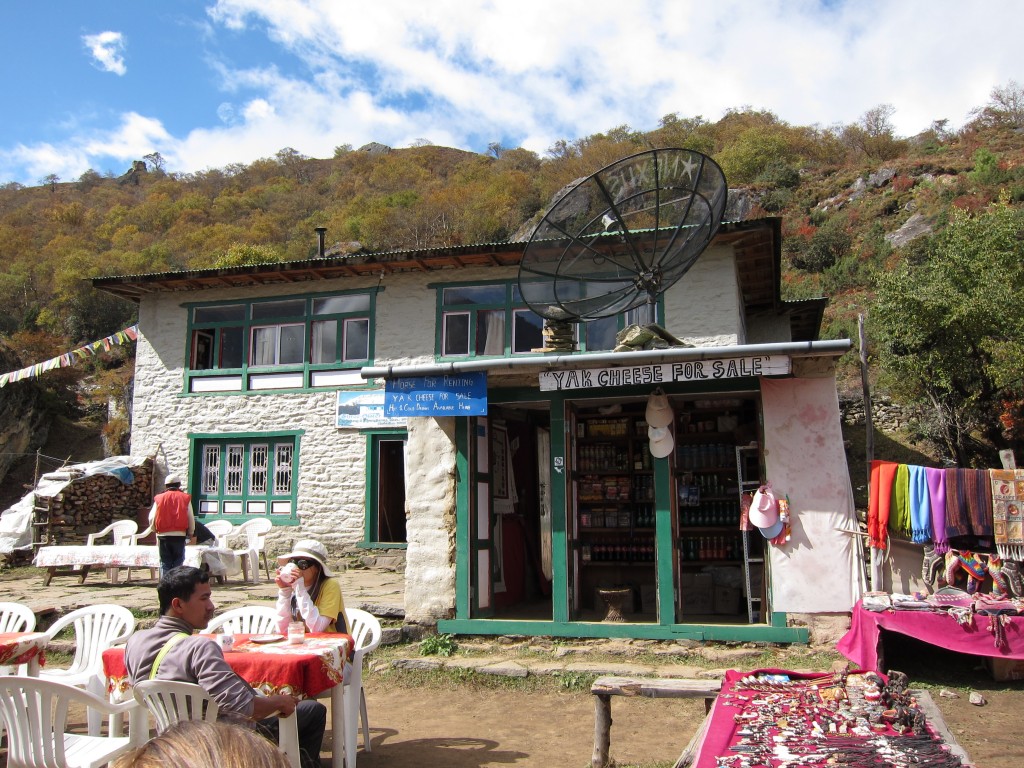We arrived in late afternoon after the clouds and fog had rolled in. In fact it was the first day we had seen anything other than good weather. At 12,687′ it is the site of a significant monastery and the largest gompa (look it up) in the Khumbu region. We sat in a service for awhile. The colors, chanting, and incense were intoxicating and were more than enough, combined with our being so far from home, to blot out everything else in the world.


From the temple area, Deana took us to a small room to meet the Lama and receive a blessing for our journey. Those with prayer flags also had them blessed. We received prayer scarfs, a thin red cord, and a warm smile. In the same room was a man suffering from what Deana thought was food poisoning. He was moaning like he was dying and had been brought for a blessing as well. On the chance he was suffering from something contagious, we were not thrilled to be spending 30 minutes in the same small spaces with him.
 We found our tea house rooms to be basic…two beds. Welcome to the outdoor long drop toilet. Then, we went over to the bakery for some apple strudel, apple cake, and some other apple things along with cups of tea. Colder, higher altitude, worse weather, Buddhist monks,,,all combining to give the feel that we weren’t in Kansas anymore.
We found our tea house rooms to be basic…two beds. Welcome to the outdoor long drop toilet. Then, we went over to the bakery for some apple strudel, apple cake, and some other apple things along with cups of tea. Colder, higher altitude, worse weather, Buddhist monks,,,all combining to give the feel that we weren’t in Kansas anymore.

Did not really sleep. This was the beginning of the same story that would go on for the next week. I just don’t sleep well at altitude. The body will start running on adrenaline.
The morning did bring a nice turn in the weather…crystal blue sky and views of mountains we suspected were there but hadn’t yet seen. Our friend Ama Dablam was there to watch over us.































